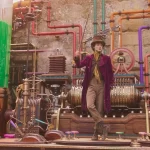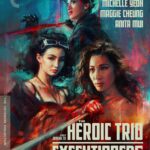Home Video Hovel: Wild Style, by David Bax
By the most pedestrian standards, Charlie Ahearn’s Wild Style is not a very good movie. The performances are uniformly amateurish and the plot, to the extent that it exists, never picks up speed or establishes emotional roots. But one would have to be pretty far removed, not only from the history of hip-hop in New York City, but from the purpose and power of art itself not to be picked up and moved by such a singular and exhilarating work.
Lee Quinones “plays” a graffiti artist (or graffiti writer, in the parlance of the time and place) named Raymond. Quinones was a real writer and essentially every person in the film is appearing either as themselves or a facsimile thereof. Raymond is quiet and unassuming but – as only a few people know – he is actually the respected writer who paints under the name Zoro. When a newspaper journalist (Patti Astor) come to the neighborhood to research a story about the writers and wrappers of the early 1980s Bronx, Raymond has to decide whether to keep his cred and mystique or expose himself to the opportunity for fame and money but risk selling out.
Truly, though, all that is just an excuse for Ahearn – himself a passionate, white outside like Astor’s journalist – to hop from train car to bedroom to underground club to basketball court to front stoop, documenting the moment of a new culture in bloom. The result is something like a musical with most of the dialogue-based scenes working as little more than a bridge from one performance (rapping, writing or dancing) to the next.
Ahearn isn’t content to simply point his camera at his subjects like they’re on display in a zoo. His editing jumps from one rapper to the next and volleys from MC to break-dancer and back. In a sequence near the end, he cuts back and forth between live performance and a DJ mixing records in what appears to be a small home kitchen. Because of these techniques, the performance sequences bounce along with the same infectious abandon as the acts they’re documenting, sometimes even approaching the aura of pastiche that defines hip-hop culture and the way it, at its best, assimilates disparate forms of expression in order to self-construct.
While the film’s dialogue, largely improvised by the amateur cast, may make some blush with its casual profanity, Wild Style is one of the most positive and – dare I? – wholesome films ever made about the capacity of minority youth in a society that subjugates them. So when you get off your couch and start dancing, know that you’re doing so for the betterment of the country.
Special features on this 30th anniversary edition include a slew of featurettes and interviews with the cast as well as a 48 page booklet and a commentary track featuring Ahearn and Fab 5 Freddy.





























